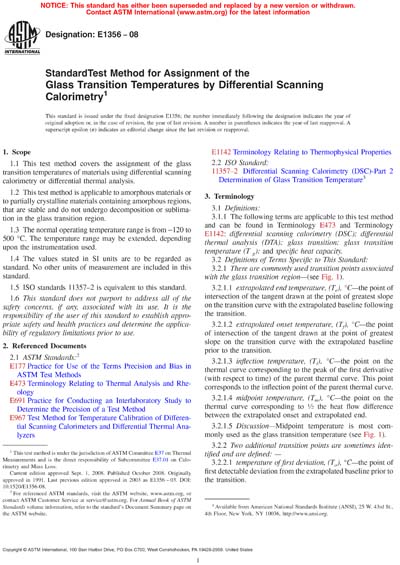Historical
ASTM E1356-08
Standard Test Method for Assignment of the Glass Transition Temperatures by Differential Scanning Calorimetry
1.1 This test method covers the assignment of the glass transition temperatures of materials using differential scanning calorimetry or differential thermal analysis.
1.2 This test method is applicable to amorphous materials or to partially crystalline materials containing amorphous regions, that are stable and do not undergo decomposition or sublimation in the glass transition region.
1.3 The normal operating temperature range is from −120 to 500 °C. The temperature range may be extended, depending upon the instrumentation used.
1.4 The values stated in SI units are to be regarded as standard. No other units of measurement are included in this standard.
1.5 ISO standards 11357–2 is equivalent to this standard.
1.6 This standard does not purport to address all of the safety concerns, if any, associated with its use. It is the responsibility of the user of this standard to establish appropriate safety and health practices and determine the applicability of regulatory limitations prior to use.
ASTM International [astm]

